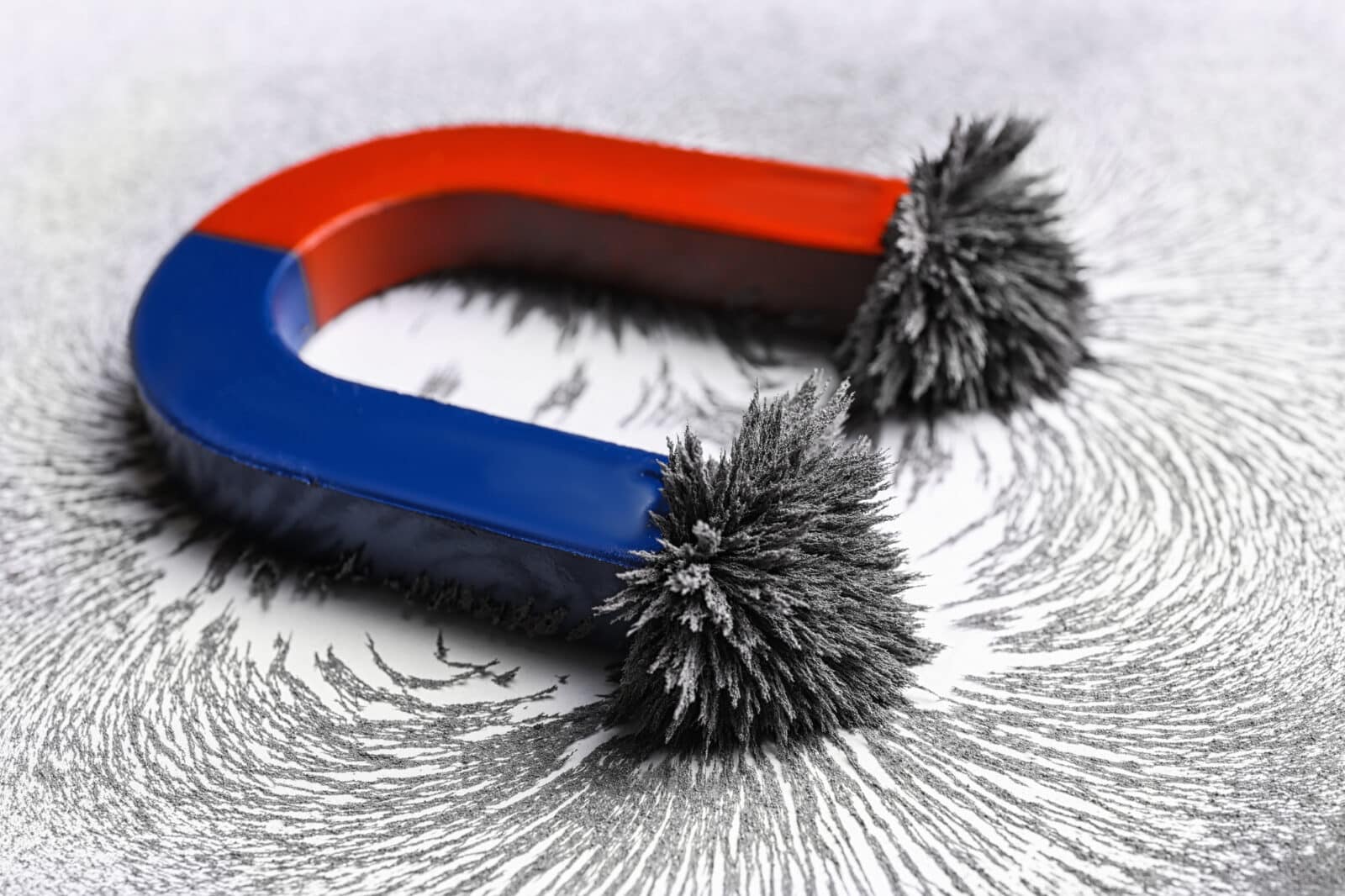Have you ever stared at a spinning mixer, mesmerized by the blades, and wondered how they move without anything touching them? Or maybe you’ve watched a wind turbine gracefully capture the wind’s energy. Magnetic coupling makes these possible.
Magnetic coupling might sound fancy, but it’s secretly behind a bunch of the everyday things we use! Good examples are sensors and actuators, a market expected to show an annual growth rate of 10.79% from 2024 to 2027.
They’re utilized in a wide range of technologies in various industries, such as electronics and automotive. Why is magnetic coupling essential in these techs? That’s because it lets things spin together without actually touching! (1)
Imagine magnetic coupling as a hidden superpower – it uses magnets to transmit rotational force, keeping things leak-proof in the bargain.
Pretty neat, right? But it can also be confusing how it works. Don’t worry; this blog post will pull back the curtain on magnetic coupling. We’ll crack open the science behind this cool tech. Get ready to discover why magnetic coupling is a game-changer in so many fields!

Table of Contents
What’s magnetic coupling?
Imagine stirring a pot of soup without a spoon touching the liquid. That’s the basic idea behind magnetic coupling products from reliable manufacturers and suppliers. They’re a way to transmit rotational force, like the stirring motion, between two shafts using invisible magnetic fields instead of a solid connection.
Magnetic fields and magnetic moments
To understand how this works, we need to figure out the world of magnetism. Every magnet has a magnetic field. It’s the invisible area of force surrounding it. This field arises from tiny whirling charges within the material, called magnetic moments.
These act like miniature compass needles, aligning themselves in specific directions based on the magnet’s overall properties.
Different types of magnetic materials
Now, let’s bring different types of materials into the picture. Most materials we encounter in daily life are diamagnetic or paramagnetic.
Diamagnetic materials have a weak repulsion to magnetic fields, causing their magnetic moments to try and oppose the external field. Paramagnetic materials, on the other hand, are weakly attracted to magnetic fields, with their magnetic moments aligning somewhat in the same direction.
But the real superheroes of magnetic coupling are ferromagnetic materials. These are like iron and lodestone – elements discovered more than 2000 years ago that are super attracted to magnets.
It’s like they have tiny invisible compasses all lined up, pointing the same way, making a much stronger and longer-lasting magnetic field. This special power is what makes them perfect for the job of magnetic coupling!
How does magnetic coupling work?
Now that we’ve explored the fundamentals of magnetism, let’s see how these invisible forces come together to create the magic of magnetic coupling.
Dipole-dipole interaction
The key lies in the interaction between magnetic moments. Remember those miniature compass needles within a magnet? When two magnets are placed close together, their magnetic moments interact, exerting either attractive or repulsive forces depending on their alignment.
Magnetic coupling relies on this interplay. Imagine two sets of permanent magnets fixed to separate shafts facing each other. In one configuration, the magnets have their north and south poles aligned. This creates a strong attractive force, pulling the shafts together.
However, a clever twist comes into play. The housing that separates the shafts is made of a non-magnetic material, preventing a direct connection.
This is where the magic happens. Even though physical contact is blocked, the attractive force between the aligned magnetic moments transmits torque, or rotational force, from the driving shaft to the driven shaft. This allows the driven shaft to spin synchronously with the driving shaft, all thanks to the invisible tug-of-war between the magnetic moments.
There’s more to the story, however. Magnetic coupling can also work with misaligned magnetic moments, albeit with a twist. This involves two other fascinating mechanisms: indirect exchange coupling and Ruderman-Kittel-Kasuya-Yosida (RKKY) interaction.
Indirect exchange coupling
Indirect exchange coupling gets its name from a kind of ‘handshake’ between the magnetic moments. In this scenario, instead of directly interacting, the magnetic moments of the driving magnets influence the electrons in nearby non-magnetic atoms.
These influenced electrons then, in turn, affect the magnetic moments of the driven magnets, ultimately transmitting torque.
Ruderman-Kittel-Kasuya-Yosida (RKKY) interaction
RKKY interaction is a more complex phenomenon, relevant for advanced audiences. It involves the intricate interplay between magnetic moments and the spin of electrons in the intervening material, enabling long-range magnetic coupling.
While the details are beyond the scope of this discussion, it’s another example of how the subtle dance of magnetic forces can create powerful effects.
In essence, magnetic coupling utilizes the attractive and repulsive forces between magnetic moments to bridge the gap between two shafts, enabling contactless transmission of rotational force.
Why does magnetic coupling matter?
The seemingly simple act of magnetic coupling has far-reaching applications across various fields, silently shaping our everyday lives. Let’s explore some of the ways this technology makes a difference.
Electrical engineering
In the realm of electrical engineering, magnetic coupling plays a starring role in transformers. These workhorses of the power grid efficiently transfer electrical energy between circuits at different voltage levels. Inductors also utilize this principle to store and release electrical energy in a controlled manner.
Data storage
Beyond the electrical world, magnetic coupling finds a crucial role in data storage, a market projected to reach USD$ 777.98 billion in value by 2030. Hard disk drives (HDDs) employ a spinning platter coated with a magnetic material.
A tiny read/write head, positioned close to the platter but without physical contact, uses magnetic coupling to read and write data.
Biomedical engineering
The applications of magnetic coupling extend even further. In the field of biomedical engineering, magnetic resonance imaging (MRI) machines harness magnetic coupling principles. They utilize powerful magnets to create a strong, uniform magnetic field that aligns the magnetic moments of atomic nuclei within the body.
By manipulating this alignment and detecting the radio signals emitted as the nuclei relax, MRI machines can generate detailed images of internal organs and tissues, aiding in medical diagnosis.
These are just a few examples of how magnetic coupling, through its ingenious manipulation of magnetic forces, has become an indispensable tool in various industries.
Conclusion
Imagine this – you have to spin something but can’t directly touch it. Sounds impossible, right? Well, magnetic coupling is like a magic trick that lets you do just that! It uses the invisible forces of magnets, like a secret handshake, to transfer spinning power across a gap. No touching involved!
This cool technology might seem simple, but it’s everywhere! It’s the reason you have electricity at home. It even lets doctors see inside you without a single scratch!
References:
- “Sensors & Actuators – Worldwide”, Source: Sensors & Actuators – Worldwide | Statista Market Forecast





